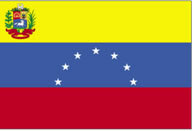One of the main environmental problems today is the large production of waste, as this process has the consequence the release of gases that promote the greenhouse effect and the pollution of groundwater and superficial. This phenomenon is one of the consequences of the population increase in cities, the intensification of the consumer model, the use of disposable products, in addition to the fad, as there is a "need" to acquire more objects modern.
Garbage is also a socioeconomic problem, as large amounts of money are allocated to the collection and treatment of urban waste. In the social aspect, several individuals are affected by the concentration of garbage in cities, which causes proliferation of insects, transmission of diseases, visual pollution, clogging of manholes, among others.
The origins of urban waste are the most distinct, and it is classified as:
Household: food, paper, plastic, glass, cardboard, deteriorated products, etc.
Industrial: ash, sludge, metals, ceramics, wood, rubber, alkaline residues, etc.
Hospital: packaging, syringes, needles, dressings, gauze, bandages, atomic parts.
Technological waste: computers, batteries and electronic devices in general.
Garbage collection must take place according to its classification, as the final treatment of these residues is different. Medical waste, for example, has to be incinerated, burned in a microwave oven or treated in an autoclave. However, this is not the case in most cities.
Do not stop now... There's more after the advertising ;)
The lack of structure and commitment of politicians to solve the waste problem has resulted in the existence of open-air dumps in several cities. The proper destination for urban waste is the sanitary landfill, built in suitable areas, with qualified professionals and a structure for the treatment of gases and leachate. Another alternative is the incineration of waste, however, this method is very expensive, being unfeasible in many cases.
The most important thing, however, is the awareness of the population, and this can be promoted through the use of the 3 R's Policy: Reduce, Reuse and Recycle. Selective collection is one of the most efficient alternatives to reduce waste, in addition to being a way of contributing to recyclable material collectors. Therefore, through simple attitudes and behavior changes, all inhabitants can collaborate to reduce waste production.
By Wagner de Cerqueira and Francisco
Graduated in Geography


